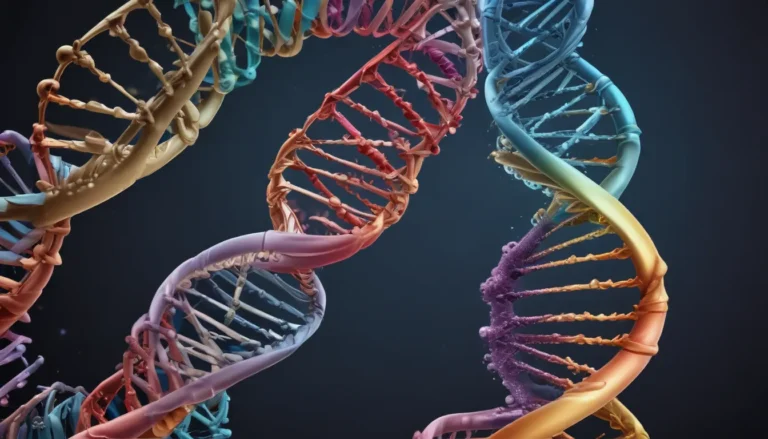A Note About Images: The images used in our articles are for illustration purposes only and may not exactly match the content. They are meant to engage readers, but the text should be relied upon for accurate information.
Organic chemistry enthusiasts, students, and seasoned chemists, get ready to embark on a journey through the captivating realm of retrosynthetic analysis. Delve into the world of breaking down complex molecules, uncovering surprising facts that will not only enhance your understanding but also ignite your curiosity about its applications in various scientific disciplines. From drug discovery to materials science, retrosynthetic analysis is a versatile tool that revolutionizes the way chemists approach synthesis processes.
Unraveling the Origins: The Legacy of Elias James Corey
At the forefront of retrosynthetic analysis stands Nobel laureate Elias James Corey, an American chemist who introduced this groundbreaking concept in the late 1960s. Corey’s innovative work transformed organic synthesis, paving the way for a new era of strategic planning in the field of chemistry.
Deconstructing Complexity: The Essence of Retrosynthetic Analysis
Retrosynthetic analysis revolves around the art of breaking down intricate molecules into simpler fragments known as synthons. These building blocks serve as the foundation for reconstructing the target molecule through thoughtful planning and strategic synthesis strategies.
The Art of Transformation: Functional Group Interconversions
Central to the process of retrosynthetic analysis are functional group interconversions. By manipulating different functional groups within a molecule, chemists can unlock a myriad of synthetic pathways, fostering creativity and innovation in the laboratory.
Navigating the Synthetic Maze: Strategies in Retrosynthesis
Crafting efficient synthetic routes requires a strategic approach, with chemists employing various tactics such as disconnection-based retrosynthesis, bioisosterism, and functional group interchange. Each strategy offers a unique perspective, guiding chemists towards optimal synthesis paths.
The Digital Age of Retrosynthesis: Computational Tools at Your Fingertips
In the modern era, computer programs have become invaluable aids in retrosynthetic analysis. These advanced tools harness the power of databases and algorithms to suggest innovative synthetic pathways, enabling chemists to visualize possibilities and optimize their strategies.
A Symphony of Selectivity: Regioselectivity and Stereoselectivity in Retrosynthesis
When embarking on retrosynthetic analysis, chemists must carefully consider regioselective and stereoselective aspects of the reaction. This meticulous attention to detail ensures the desired stereochemistry and regiochemistry are achieved, leading to successful synthesis outcomes.
Harmonizing Approaches: The Synergy of Retrosynthetic Analysis and Forward Synthesis
While retrosynthetic analysis aids in deconstructing complex molecules, forward synthesis complements this process by synthesizing compounds from basic starting materials. Together, these approaches synergize to streamline synthetic pathways and enhance overall efficiency.
Unveiling Hidden Pathways: Optimizing Synthetic Routes with Retrosynthetic Analysis
By leveraging the insights derived from retrosynthetic analysis, chemists can identify bottlenecks and modifications to optimize synthetic routes. This meticulous planning leads to improved yields, reduced costs, and enhanced efficiency in the laboratory.
Nature’s Blueprint: Retrosynthetic Analysis in Natural Product Synthesis
The intricate molecules found in nature present unique challenges in synthesis, making retrosynthetic analysis an invaluable tool in natural product synthesis. Chemists can dissect complex structures into simpler components, paving the way for efficient synthesis strategies.
Beyond Molecules: Retrosynthetic Planning for Polymers
Retrosynthetic analysis extends its reach to the domain of polymers, where chemists can analyze repeat units and functional groups within polymer chains to plan efficient synthesis routes. This strategic approach enhances the design and production of complex polymer structures.
Reflecting Backwards: Retrosynthesis-Based Retrospective Analysis
Through retrosynthetic analysis, chemists can trace their steps backward to identify and rectify synthetic errors in a process known as retrosynthesis-based retrospective analysis. This methodical approach helps enhance the overall quality and precision of synthesis protocols.
Protecting the Future: Strategic Use of Protecting Groups
Protecting groups play a crucial role in preventing unwanted reactions during synthesis by temporarily modifying functional groups. Retrosynthetic analysis emphasizes the strategic application of protecting groups to ensure precise and controlled synthesis outcomes.
Total Synthesis Mastery: Retrosynthetic Analysis in Complex Molecule Construction
At the heart of total synthesis lies retrosynthetic analysis, guiding chemists in structuring efficient and practical pathways for the complete construction of complex molecules from basic building blocks. This systematic approach enhances creativity and problem-solving skills in organic synthesis.
The Art of Visualizing: The Retrosynthetic Tree and Its Insightful Possibilities
The retrosynthetic tree serves as a visual roadmap, illustrating the diverse synthetic pathways derived from retrosynthetic analysis. This graphical representation enables chemists to explore various possibilities and evaluate different synthetic options with clarity and precision.
Cultivating Creativity: The Transformative Power of Retrosynthetic Analysis
Retrosynthetic analysis transcends mere synthesis planning, inviting chemists to think critically, creatively, and strategically as they navigate the complexities of organic chemistry. This process of problem-solving fosters innovation and inspires breakthroughs in the field of chemical research.
Through these 17 intriguing insights, the profound significance and impact of retrosynthetic analysis in organic chemistry are illuminated. From unlocking new drug discoveries to advancing materials science, retrosynthetic analysis continues to shape the landscape of chemical research, offering endless opportunities for exploration and discovery.
Conclusion: Embracing the Future of Retrosynthetic Analysis
In conclusion, retrosynthetic analysis stands as a beacon of innovation and strategic thinking in the realm of organic chemistry. By unraveling the intricacies of complex molecules and forging efficient synthesis pathways, chemists pave the way for groundbreaking discoveries and advancements in diverse scientific disciplines. As we embrace the boundless potential of retrosynthetic analysis, we embark on a journey of exploration and discovery, pushing the boundaries of what is achievable in the world of chemistry.
FAQs: Unveiling the Mysteries of Retrosynthetic Analysis
Q: What is retrosynthetic analysis?
A: Retrosynthetic analysis is a technique in organic chemistry that involves breaking down complex molecules into simpler fragments to identify possible synthetic routes.
Q: Why is retrosynthetic analysis important?
A: Retrosynthetic analysis allows chemists to plan and design synthetic routes for complex molecules, saving time and resources in the laboratory and enabling the development of efficient and sustainable synthetic strategies.
Q: How does retrosynthetic analysis work?
A: Retrosynthetic analysis works by starting with a target molecule and breaking it down into simpler fragments using known chemical reactions. These fragments can then be reassembled to synthesize the target molecule.
Q: What are the applications of retrosynthetic analysis?
A: Retrosynthetic analysis finds applications in drug development, materials science, and other areas of chemical research where the synthesis of complex molecules is required.
Q: Can retrosynthetic analysis lead to unexpected discoveries?
A: Yes, retrosynthetic analysis can lead to unexpected discoveries by revealing connections between different molecules and suggesting novel synthetic approaches.
Q: Does retrosynthetic analysis have limitations?
A: Retrosynthetic analysis relies on the availability of known chemical reactions and can be limited by the complexity of the molecule being analyzed.
As we navigate the complexities of retrosynthetic analysis, we unveil a world of possibilities and inspiration, guiding us towards new horizons in the realm of organic synthesis. Let the journey of discovery continue as we embrace the transformative power of retrosynthetic analysis and its enduring impact on the world of chemistry.






